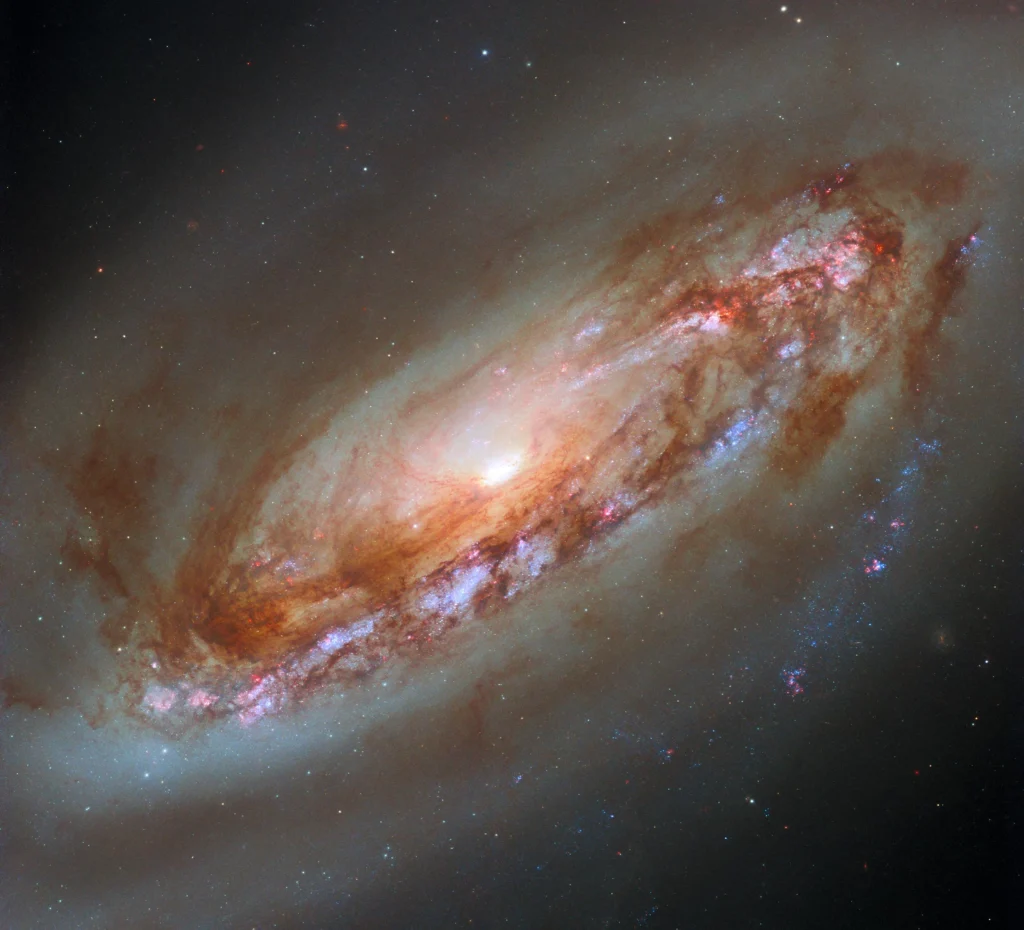Astronomers working with the Hubble Space Telescope have published a new image. It shows the galaxy M90.

M90 is located 55 million light-years away from Earth. It is part of the Virgo cluster. The nearest large galactic cluster to us, consisting of more than a thousand members, has been called so.
Hubble has photographed M90 several times over the years. The presented photo was taken from data collected during observations in 2019 and 2023. They were processed to create a new image that gives a much more complete view of the galaxy’s dusty disk, its gaseous halo and bright core.
The inner regions of the M90 disk are rich in active star formation sites, which can be identified by the characteristic red emission of hydrogen, but they are absent in the rest of the galaxy. The fact is that about 300 million years ago, the galaxy passed near the center of the Virgo cluster. The gas clouds filling it affected M90 like a strong headwind, forcing a huge amount of gas out of it and creating a diffuse halo around it, which can be seen in the Hubble photo. This makes M90 no longer able to form new stars, and it will eventually fade away as a spiral galaxy.
Another interesting fact about M90 is that it has accelerated so much after passing through the Virgo clusters that it will eventually leave it forever. Coincidentally, it’s moving in our direction — it’s one of the few galaxies approaching the Milky Way. So hypothetical observers of the future will be able to get an even better look at M90 and see the process of its transformation from a spiral to a lenticular galaxy.
According to Esahubble


